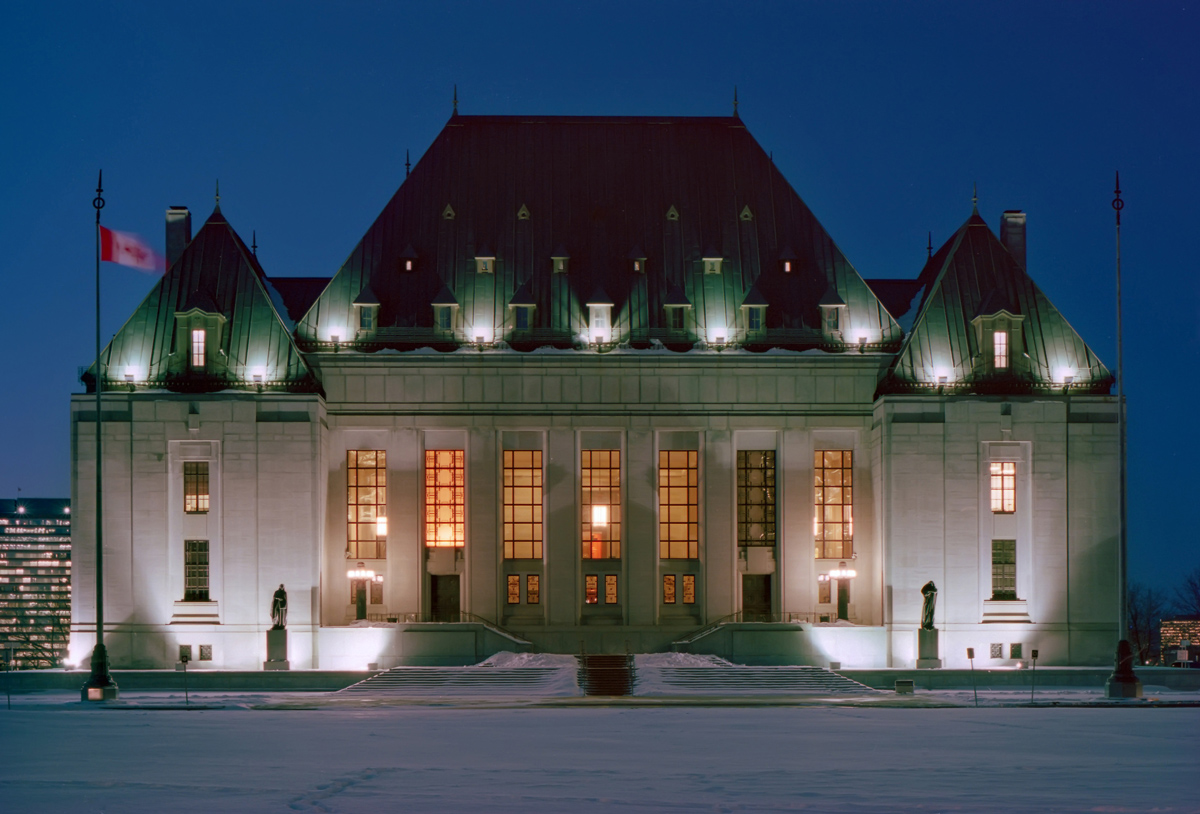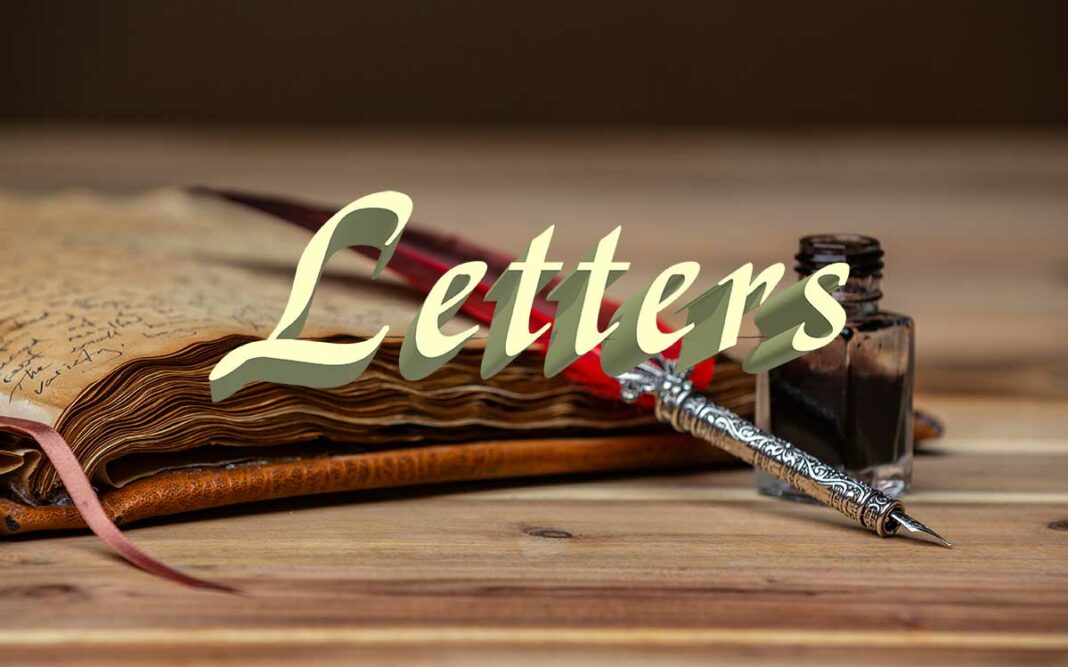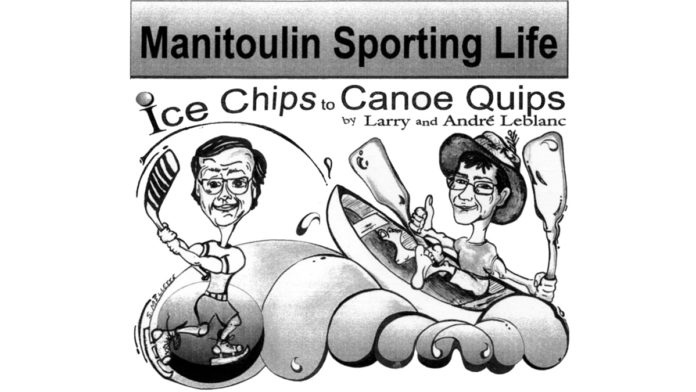Ontario calls on SCC to uphold minority interpretation in the Robinson Huron Treaties annuity case
To the Expositor:
Ontario’s appeal of the Restoule Court of Appeal decision was argued before a full panel of the Supreme Court of Canada on November 7 and 8, 2023. This writer was present in the courtroom.
Ontario was the only appellant. Canada supported the position of the treaty bands respondents, and even gave 10 minutes of its allotted argument time to them.
Ontario urged the Court to adopt the interpretation of the treaties made by the two-judge minority in the Court of Appeal. It argued that the treaties should be interpreted using the standard of correctness, that “context should not overwhelm the language of the treaties” and that “the language of the treaties doesn’t support two separate annuities.”
Ontario argued that there was no evidence before the Court that the treaty bands didn’t understand the treaties.
Justice Jamal confirmed with Ontario’s counsel that Ontario was relying on “treaty practice” (the uncontentious way the parties acted towards one another for 150 years after the treaties were signed, wherein there was no complaint about the annuity being only $4 per year and it never being increased).

Shutterstock
In answer to a question from the Court, Ontario conceded that during the 150-year treaty implementation period it should have engaged with the treaty bands over the issue of increasing the annual annuity, and surprisingly, conceded in answer to a question from Justice Jamal, that the annuity should have been increased at some point during this period. Ontario conceded that there was a “150-year failure to address augmentation,” which Ontario admitted was a breach of the treaty.
It argued that the only remedy that the treaty bands should get from the Court for this breach was a Declaration to that effect, citing an earlier Supreme Court case as precedent. It argued that both the trial judge and the Court of Appeal “usurped the Crown’s discretion” by ordering money damages to be awarded, which would be quantified by the trial judge in a Stage Three hearing. Ontario argued that the lower courts wrongly “quantified the exercise of the discretion.” It argued that the Court should strike down both the money damages award and the order to conduct the Stage Three hearing, leaving only the Declaration.
Ontario argued that a Declaration of breach of the treaties in this regard would “engage the Honour of the Crown” which would be followed by “nation to nation” negotiations, which, if engaged in dishonourably, could be subject to judicial review. It argued that a Declaration would guarantee an honourable process, but, not any particular result, because Ontario had to consider many factors in relation to its governance of the province and to its allocation of resources in doing that. Thus, Ontario had to regain ultimate discretion.
Justice Jamal compared the Declaration-only remedy sought by Ontario to a general mandamus order, which would be akin to the Court ordering: “Choose, but we won’t tell you how to choose.” He also referred inferentially to Ontario’s polycentric governance obligations.
It appeared to be conceded by Ontario counsel that treaties, being constitutional, federal and sui generis in nature, were likely not subject to Ontario limitations legislation. Notwithstanding that, as he argued: “If you push yourself down the road to damages and other equitable remedies, expect a limitations argument.”
Justice O’Bonsawin, Canada’s first Indigenous Supreme Court Justice, questioned whether the treaty bands would have enough of a guarantee if Ontario’s position that a Declaration was the only proper remedy was accepted by the Court.
Justice Moreau, the new Justice from Saskatchewan just sworn in the day before, queried whether a Declaration would need to be “tooled up” in order to give it a more mandatory nature.
The Court was told that the Huron treaty bands had settled the case with Ontario and Canada, for past damages only, for $10 billion. It was told that the Superior treaty bands had not settled their claim for past damages and, at the Stage three hearing, had quantified this claim at $126.2 billion.
After Ontario concluded its submissions, it was the turn of counsel for the treaty bands and the First Nation Intervenors.
The first counsel for the treaty bands re-stated the trial judge’s findings of fact and law in their favour and the favourable rulings of the majority of the Court of Appeal. He urged the court to show deference to the trial judge’s findings of fact and to uphold her findings of law and those of the Court of Appeal majority.
He argued that Ontario should not have “unilateral discretion” with respect to when treaty annuity augmentation negotiations would take place and with respect to how much the annuity augmentation should be.
The first question from the Bench to treaty bands’ counsel came at about 20 minutes into his presentation. (Ontario counsel had started getting peppered with questions from the Bench within the first minute of his presentation.)
Justice Cote asked counsel to confirm that his presentation was based on there being a “nation to nation” relationship, which counsel answered in the affirmative.
Justice Martin, in response to counsel’s submission that the purpose of the treaty was to “share the wealth”, asked, “where does the word “fair” (share) come from?” Counsel responded that concept was consistent with “the Anishnaabe way.”
The second treaty bands’ counsel submitted that if the court cannot award money damages, then this “will send the wrong message.”
Justice Rowe said: “We must be judges. We can’t intuit.”
Shortly thereafter Justice Jamal, referring to the Huron bands negotiation of a $10 billion settlement and then referring to the $126.2 billion being claimed by the Superior bands, asked: “How is a Court to determine the correct number? It is difficult for any judge.”
Justice Jamal then added that the $10 billion settlement with the Huron bands was “a good example of negotiation. The Crown didn’t ask the court to do that work.”
Justice Rowe challenged the manner in which this counsel characterized Ontario’s main argument. He said: “You are raising a straw man argument and misrepresenting Ontario’s position by saying it is basically “we can pay you nothing.” That’s not Ontario’s position! Ontario takes its responsibility solemnly.”
It seemed to become common ground in the exchanges between counsel and the Court that there is no fiduciary obligation per se with respect to treaty practice. Rather, such an obligation, if it ever existed, should, for future clarity, be replaced with the duty to implement treaties honourably. Counsel conceded; ‘We don’t need fiduciary obligation.”
Justice Rowe said: “With a fiduciary duty you’re not mindful of your own interests. A duty to implement honourably is different. The Crown can meet its own interests as well.”
The third treaty bands’ counsel to make submissions said that “Ontario’s Honour of the Crown is a sorry sight.” He criticized Ontario’s argument in the Stage Three hearing that Ontario had suffered a loss and that there was no “wealth” to “share.” He referred to the Stage Three evidence of Noble Prize-winner Joseph Stieglitz quantifying the treaty bands’ claim at $126.2 billion. Again, a Justice asked: “Can a judge assess this?” Counsel answered in the affirmative.
Justice Rowe then sharply said that to properly assess the claim, “There has to be a methodology. I don’t care what your Nobel Prize winner says. You have to have a methodology.”
Justice Kazakatsanis expressed concern that “Stage Three is not before us.”
Counsel criticized the fact that earlier Southern Ontario treaties stipulated a $10 annuity, but the Robinson treaties only stipulated a $4 annuity, to which Justice O’Bonsawin responded: “If we’re not going to get $10, only $4, we want something else. Isn’t that what you’re saying?” Counsel answered in the affirmative.
In response to counsel listing errors allegedly made by the minority judges of the Court of Appeal Justice Rowe said: “The jurisprudence is irreconcilable. Our job is to bring clarity to the law. The Honour of the Crown does it all. The Honour of the Crown gets around equitable remedies and limitations problems.”
Counsel for Canada was next.
She submitted that a Declaration should not be the only kind of relief available. She said in effect that declaratory relief is usual but not exclusive. She said that where a treaty makes a money promise it makes sense to permit a money remedy.
Justice Jamal asked her: “At this stage is awarding money not premature? The court needs a proper context in which to award money.”
Justice Rowe said: “With declaratory relief the parties come to understand. It doesn’t say, “you pay”. It says: “Here’s how to act- to relate to one another. Only after a Declaration, if the parties fail to proceed honourably, then claim money. For Ontario, once the situation is clarified “go ye forth.”
The court adjourned until the next morning.
The Attorney General of New Brunswick was the only Intervenor on behalf of Ontario. Starting off the second day of argument, New Brunswick counsel argued that in the absence of special circumstances where a Declaration would be meaningless and specific relief the only remedy, such as in a “flood situation or where a previous Declaration had not been followed,” a Declaration was the only proper remedy. He argued that there were no such special circumstances here and that for reconciliation, negotiations are better than going to court.
There followed five-minute Zoom submissions from counsel for numerous First Nations bands and associations across the country, all in support of the treaty band respondents and their argument that a money damages award was appropriate and necessary and that the trial judge could quantify it.
One counsel argued that Ontario shouldn’t be able to “hide behind” a Declaration and that Ontario has an “impoverished view” of the Honour of the Crown and that a money award “is required to restore it.”
Justice Rowe responded, saying: “Ontario didn’t necessarily know what the treaty said.”
Another counsel argued that “it is an error to presume that the written document is the treaty,” an assertion which Justice Jamal questioned.
Another lawyer called Ontario a “repeat offender, “a recidivist” whose conduct was characterized by “173 years of gracelessness.”
At this point Chief Justice Wagner made one of his only comments during all of the arguments: “Intervenors should not speak on the merits of the case.”
Counsel for one Prairie band Intervenor submitted that in its decision the Supreme Court should find that there is an “implied obligation” to augment treaty annuities. (The Prairie treaties do not contain an augmentation clause.)
Another Prairie bands’ counsel similarly argued that the Prairie treaties annuities have “failed to keep pace” and are now “substantially devalued” promises. He said that there is a need for “a framework for addressing the Crown’s longstanding failure to address (increasing benefits).” He also argued that the written treaties do not comprise the whole agreement between the parties.
Counsel for another Intervenor argued that there was a need for a “contextual interpretation” of all treaties, that the Crowns’ post-treaty conduct has been “authoritarian,” that the Crown-Indigenous relationship shifted from “equal nation to nation to authoritarian” and that the Crowns had “subjugated First Nations.”
Another Intervenor counsel argued that there was “an overreliance on treaty text,” and that “treaty text is not more important than any other evidence.”
Justice Jamal, citing former Chief Justice McLachlin, said in effect that the treaty text is the most important factor.
At the conclusion of the submissions the Court announced that it was reserving its decision, which it said would be rendered in due course.
Peter Best
retired lawyer
and Espanola native





